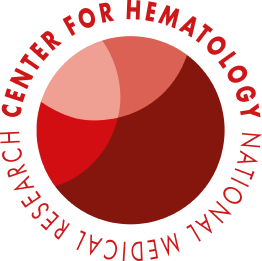About
- Official Information
Official Information
- A Word from Our Director
- About the NMRC for Hematology
- Structure
- Administration
- Departments
- History
History
- Our History
- All Directors of the NMRC for Hematology
All Directors of the NMRC for Hematology
- Our Awards
- Printed Publications of the NMRC for Hematology
- Gallery
- News
- Reviews
- Press Office
- Useful Resources
Patients
- Medical Tourism
- Consultative Doctors
- Clinical Departments
- Our Doctors
- Price List for Paid Medical Services
- High-tech Medical Care
- Preparation for Diagnostic Tests
Preparation for Diagnostic Tests
- Preparation instructions for a rectoromanoscopy
- Preparation instructions for low-dose computed tomography (CT) of skeletal bones without bolus contrast enhancement
- Preparation instructions for computed tomography (CT) of the thoracic cavity, brain, paranasal sinuses, orbits, osteoarticular apparatus, soft tissues of the neck without bolus contrast enhancement
- Preparation instructions for magnetic resonance imaging (MRI)
- Preparation instructions for a colonoscopy
- Indications for ultrasound examination of veins and arteries
- Preparation instructions for an excretory urography
- Preparation instructions for computed tomography (CT) of the thoracic cavity, brain, urinary system, vessels of the head and neck, aortography with bolus contrast enhancement
- Preparation instructions for computed tomography (CT) of the abdominal and pelvic organs with and without bolus contrast enhancement
- Preparation instructions for an esophagogastroduodenoscopy (EGD), bronchoscopy, laryngoscopy
- Preparation instructions for an ultrasound examination of the abdominal organs
- Indications and contraindications for echocardiography (ECHO-KG)
- Patient Stories
- Procedure for Issuing Medical Documentation
- Internal Regulations for Patients and Other Visitors
- Rules for Visiting Hospital Patients
- About
About
- Official Information
Official Information
- A Word from Our Director
- About the NMRC for Hematology
- Structure
- Administration
- Departments
- History
History
- Our History
- All Directors of the NMRC for Hematology
All Directors of the NMRC for Hematology
- Our Awards
- Printed Publications of the NMRC for Hematology
- Gallery
- News
- Reviews
- Press Office
- Useful Resources
- Patients
Patients- Medical Tourism
- Consultative Doctors
- Clinical Departments
- Our Doctors
- Price List for Paid Medical Services
- High-tech Medical Care
- Preparation for Diagnostic Tests
Preparation for Diagnostic Tests
- Preparation instructions for a rectoromanoscopy
- Preparation instructions for low-dose computed tomography (CT) of skeletal bones without bolus contrast enhancement
- Preparation instructions for computed tomography (CT) of the thoracic cavity, brain, paranasal sinuses, orbits, osteoarticular apparatus, soft tissues of the neck without bolus contrast enhancement
- Preparation instructions for magnetic resonance imaging (MRI)
- Preparation instructions for a colonoscopy
- Indications for ultrasound examination of veins and arteries
- Preparation instructions for an excretory urography
- Preparation instructions for computed tomography (CT) of the thoracic cavity, brain, urinary system, vessels of the head and neck, aortography with bolus contrast enhancement
- Preparation instructions for computed tomography (CT) of the abdominal and pelvic organs with and without bolus contrast enhancement
- Preparation instructions for an esophagogastroduodenoscopy (EGD), bronchoscopy, laryngoscopy
- Preparation instructions for an ultrasound examination of the abdominal organs
- Indications and contraindications for echocardiography (ECHO-KG)
- Patient Stories
- Procedure for Issuing Medical Documentation
- Internal Regulations for Patients and Other Visitors
- Rules for Visiting Hospital Patients
- Science
- Home
- Patients
- Preparation for Diagnostic Tests
- reparation instructions for an excretory urography
reparation instructions for an excretory urography
Preparation instructions:
- exclude gas-forming foods the day before the study
- on the eve of the study, in the evening, a cleansing enema (1.5-2.0 liters of water)
- do not have dinner (if possible)
- a light breakfast is required in the morning
For a study with intravenous contrast enhancement, it is necessary to have:
1) the absence of an allergic reaction to iodine-containing drugs;
2) a biochemical blood test (level of creatinine, urea) no more than 1 week old;
3) an installed peripheral or central venous catheter.If there are studies of previous stages of observation, it is necessary to present the study data to the radiologist (preferably on CD / DVD).
Contraindications for CT with intravenous contrast enhancement:
- severe bronchial asthma;
- hyperthyroidism;
- severe diabetes mellitus;
- nephropathy (including myeloma);
- pregnancy;
- with caution if there is a history of allergic reactions (consultation with an allergist is indicated).
 Anti-corruption
Anti-corruption Helpline of the Ministry of Health of the Russian Federation on Anti-corruption Issues
Helpline of the Ministry of Health of the Russian Federation on Anti-corruption Issues Independent assessment of the quality of conditions for the provision of services by medical organizationsOfficial website of the Federal State Budgetary Institution "NMRC for Hematology" of the Ministry of Health of Russia © 2025Site support - ADDU
Independent assessment of the quality of conditions for the provision of services by medical organizationsOfficial website of the Federal State Budgetary Institution "NMRC for Hematology" of the Ministry of Health of Russia © 2025Site support - ADDUWe use cookies
By staying on this website, you accept the privacy policy and agree to the terms of use of cookie files.
×Agree - Official Information


